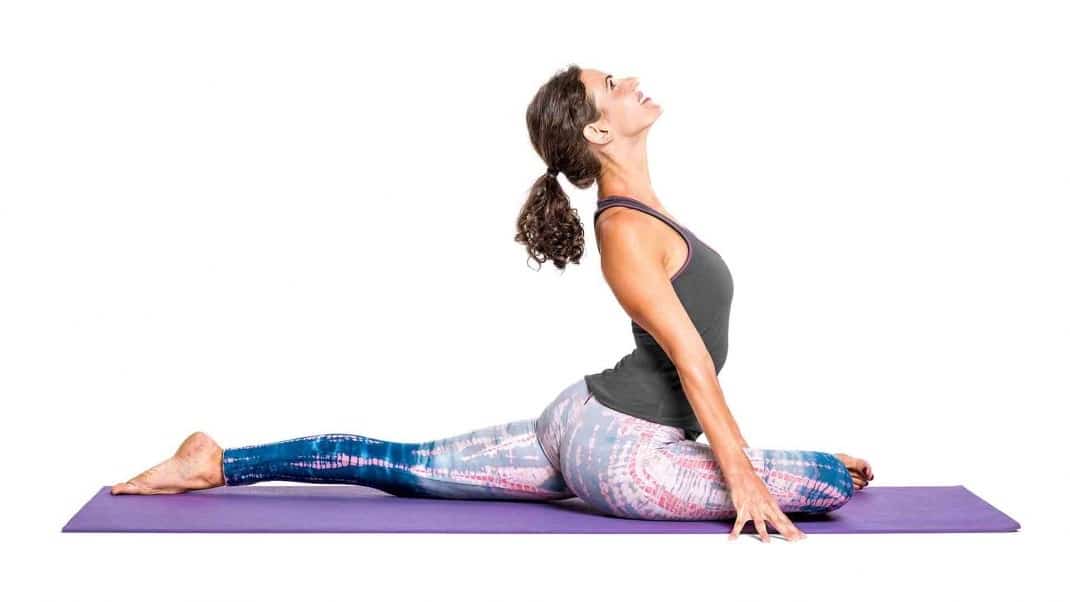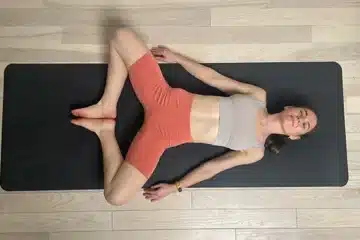Pigeon Pose, or Eka Pada Rajakapotasana in Sanskrit, is a revered yoga posture renowned for its ability to unlock deep-seated tension, promote flexibility, and instill a sense of surrender and renewal.
As a staple in many yoga practices, Pigeon Pose offers a sanctuary for practitioners to delve into the realms of both physical release and emotional healing.
In this article, we explore the essence, benefits, and techniques of Pigeon Pose, inviting you to embrace the transformative power it holds.
Understanding Pigeon Pose
Pigeon Pose derives its name from the resemblance to a pigeon’s posture, particularly in the way one leg is folded in front of the body while the other extends behind.
In its full expression, the front leg is bent at a 90-degree angle, with the shin parallel to the front of the mat, while the back leg extends straight behind, resting on the ground.
The hips are squared and lowered towards the mat, allowing for a deep stretch in the hip flexors, groin, and lower back.
Benefits of Pigeon Pose:
- Releases tension in the hips: Pigeon Pose targets the deep muscles of the hips, alleviating tightness and tension accumulated from prolonged periods of sitting or physical activity.
- Increases hip flexibility: Regular practice of Pigeon Pose helps to improve hip mobility and range of motion, enhancing overall flexibility and ease of movement.
- Relieves lower back pain: The stretching and opening of the hip flexors and piriformis muscles in Pigeon Pose can alleviate discomfort and tension in the lower back, offering relief from pain and stiffness.
- Facilitates emotional release: As a hip-opening posture, Pigeon Pose is often associated with releasing stored emotions and energetic blockages, providing a cathartic experience for practitioners.
- Promotes mindfulness and introspection: The deep sensation experienced in Pigeon Pose invites practitioners to cultivate present-moment awareness and delve into introspection, fostering a deeper connection between mind and body.
Techniques for Practicing Pigeon Pose:
- Begin in a tabletop position on your hands and knees, with wrists aligned under shoulders and knees under hips.
- Bring your right knee forward towards the right wrist, positioning the shin diagonally across the mat, with the right foot flexed.
- Slide the left leg back, straightening it behind you, and lower the hips towards the mat.
- Ensure the hips remain squared and level, with the front of the pelvis facing forward.
- If comfortable, walk the hands forward, lowering the chest towards the mat and resting the forehead or chin on the ground.
- Hold the pose for 1-3 minutes, breathing deeply and allowing the body to relax and soften into the stretch.
- To release, gently walk the hands back, tuck the left toes under, and lift the hips, returning to tabletop position. Repeat on the opposite side.
Conclusion
Pigeon Pose serves as a gateway to both physical liberation and emotional exploration on the yoga mat.
By surrendering to the depths of this pose, practitioners can unlock tightness, find release, and embark on a journey of self-discovery and renewal.
Incorporate Pigeon Pose into your practice with reverence and mindfulness, and embrace the transformative journey it offers towards greater freedom and authenticity in both body and spirit.




